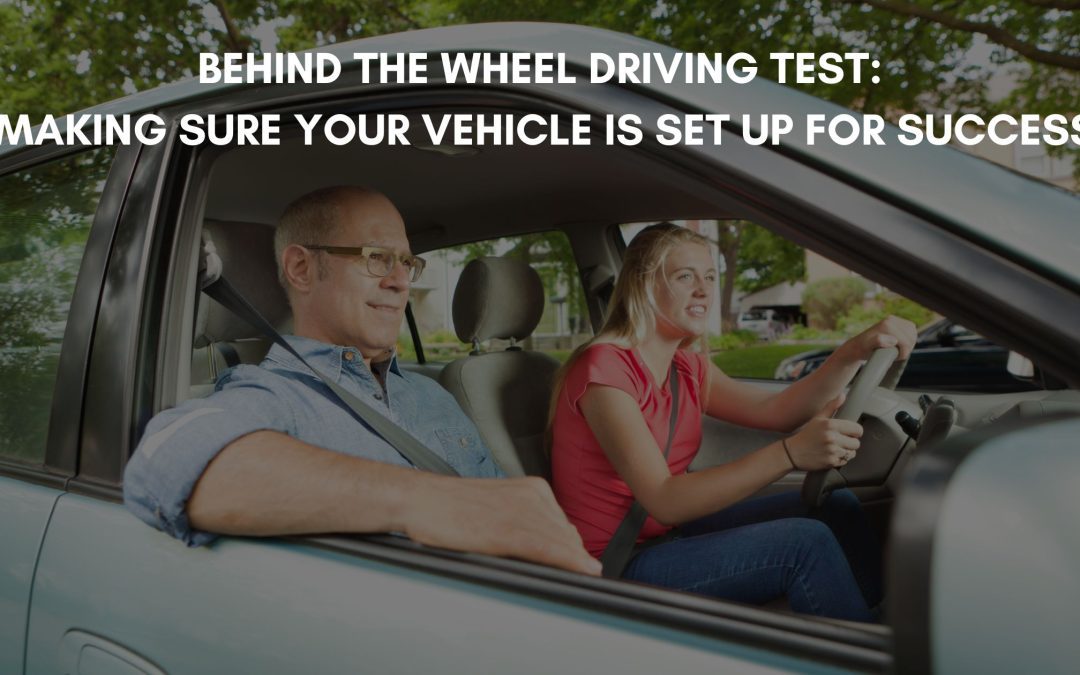In the last article on Your Drivers Ed Online, we discussed three essential parts of the behind the wheel driving test. Click here to read part one. We talked about what they will cover on the exam, who will be required to take the exam, and the best ways to prepare for the exam. These are very important parts of getting ready for your behind the wheel test, but we felt like we should address a few other points. Not only do you, as the student, need to be confident and ready, your vehicle must be ready and up to par for the exam as well.
Most likely, you will use a parent’s vehicle, a relative’s, or even a friend’s. Regardless of ownership, there are things you will need to check out on the vehicle before the exam. If your vehicle does not meet California standards, you will not be able to take your exam. That’s why doing an inspection of your vehicle with a parent or guardian before arriving for your exam is a great idea. The last thing you want is to show up and not be able to take the driving exam because something is wrong with the vehicle.
Vehicle Requirements
Before your exam begins, the examiner will want to make sure the vehicle you have chosen to take the exam in is safe to drive. The examiner will look for the following:
- A front and rear license plate. The rear license plate must have the vehicle’s current and up to date registration.
- Working brake lights.
- Both the left and right blinkers work in the front and rear of the vehicle.
- Functioning horn.
- Tires with tread. There cannot be any visible bald spots.
- Break pressure.
- Working driver’s side window.
- An unobstructed windshield. Make sure both you and the examiner have a clear view of the road.
- Rear view mirrors.
- Both front doors must work properly.
- Glove box must be able to remain closed.
- A passenger seat that attaches securely to the vehicle.
- Fully functioning seatbelts.
- Parking brake.
- Emergency lights.
It is important to note that you will also need to point out and demonstrate knowledge of how to use the headlights, defrosters, emergency flashers, parking brake, and windshield wipers.
Although you may not have much control over the vehicle you learned to drive in, it’s important to make sure these features are in good working order. If they are not, you will not have the opportunity to take the exam and will need to reschedule to a later date when you have a proper vehicle.
Proof of Insurance
Not only must your vehicle be in good working condition, it must also have up-to-date insurance. Insurance is always required when operating a vehicle and your behind the wheel test is no exception (if you want to learn more about teen drivers insurance, click the link here). In order to prove the car has proper insurance, you will need to provide one of the following documents (Source: California DMV):
- A document with a liability insurance policy or surety bond number.
- An assigned risk insurance card with the name of the assigned insurance company, file number, and current coverage dates.
- A current insurance binder or copy of an insurance policy signed or countersigned by an insurance company representative.
- A DMV-issued certificate of self-insurance or acknowledgment of cash deposit.
- A written confirmation from the insurer that the person is insured.
- A rental vehicle contract (the applicant must be listed on the contract as an insured driver).
If you cannot provide insurance, you cannot take the behind-the-wheel test and will have to reschedule when the vehicle gets properly insured.
You Passed
There’s nothing quite like the feeling of getting your driver’s license. It’s a rite of passage that symbolizes your journey into adulthood. For many people, it’s a momentous occasion that marks a significant milestone in their lives. For others, it’s simply a practical necessity that opens up a whole new world of possibilities. Regardless of your personal circumstances, getting your driver’s license is an exciting experience.
Once you have your license, you suddenly have the freedom to go wherever you want, whenever you want. But with that comes a lot of responsibility. You need to be careful when driving and always follow the law. Always take driving seriously, as not only are you responsible for your safety but also for others in the car and on the roadway.

